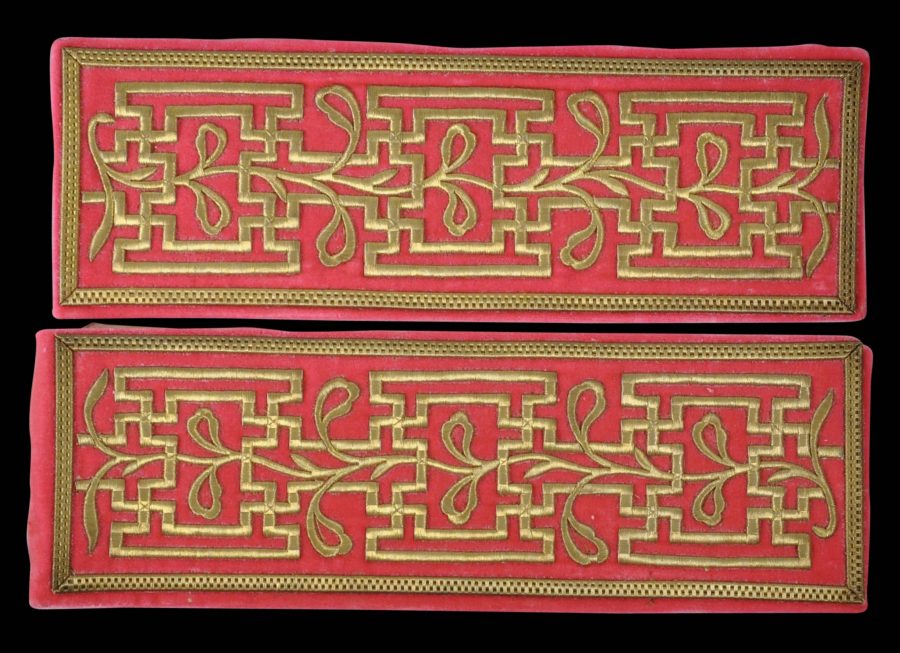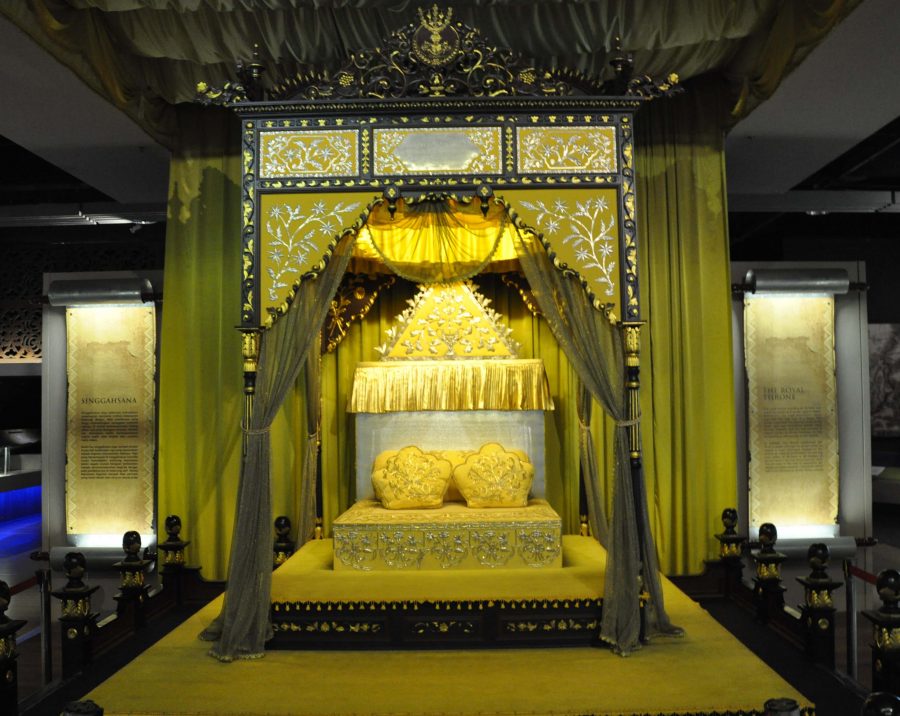Enquiry about object: 5306
Unusual Pair of Malay Bolster-End Tekat Panels with Gold Thread
Malay People, Malay Peninsula, Malaysia circa 1920
approx. length of embroidered area of each: 24cm, height: 8cm
Provenance
collected by Alwyn Sidney Haynes (1878-1963), and thence by descent. Haynes was a colonial administrator in Malaya and the Straits Settlements between 1901 and 1934. He held many posts including Acting British Resident, Pahang (1924); British Resident, Perak (1925); British Advisor, Kedah (1925); British Advisor, Kelantan (1930); and Acting Colonial Administrator, Straits Settlements (1933), after which he retired and returned to England, and lived near Stratford-upon-Avon, and then in Leamington Spa. Haynes loaned some of the items he collected in Malaya to the Pitt Rivers Museum in Oxford in 1939. He was awarded an Order of the British Empire (OBE) in 1950.
Tekat is the Malay name given to the technique of decorating textile panels (usually velvet) with thickly applied gold thread decoration. When the thread is applied by couching, the technique is known as tekat timbul or tekat suji.
The striking pair here are rectangular and comprise couched gold thread on pink velvet backgrounds. The decoration shows significant Chinese influence whilst adhering to Islamic precepts. The use of pink and hold is unusual.
The panels were intended to be added to the end of a long, stiff, rectangular bolster that would have adorned a wedding bed. (A photograph taken in February 2017 of such a wedding bed, in Malaysia’s National Museum in Kuala Lumper, appears below.)
The two panels are in excellent condition. It is likely that they were never used. For display purposes, such panels often are framed behind glass today.
References
Ismail, M.S.Z., et al., Muzium Tekstil Negara/National Textile Museum, Department of Museums Malaysia, 2012.
Uda, Y.M.R.D.P. Fuziah Raja Tun et al., Tradition & Continuity: Woven and Decorated Textiles of the Malay Peninsula, Islamic Arts Museum Malaysia, 2013.



